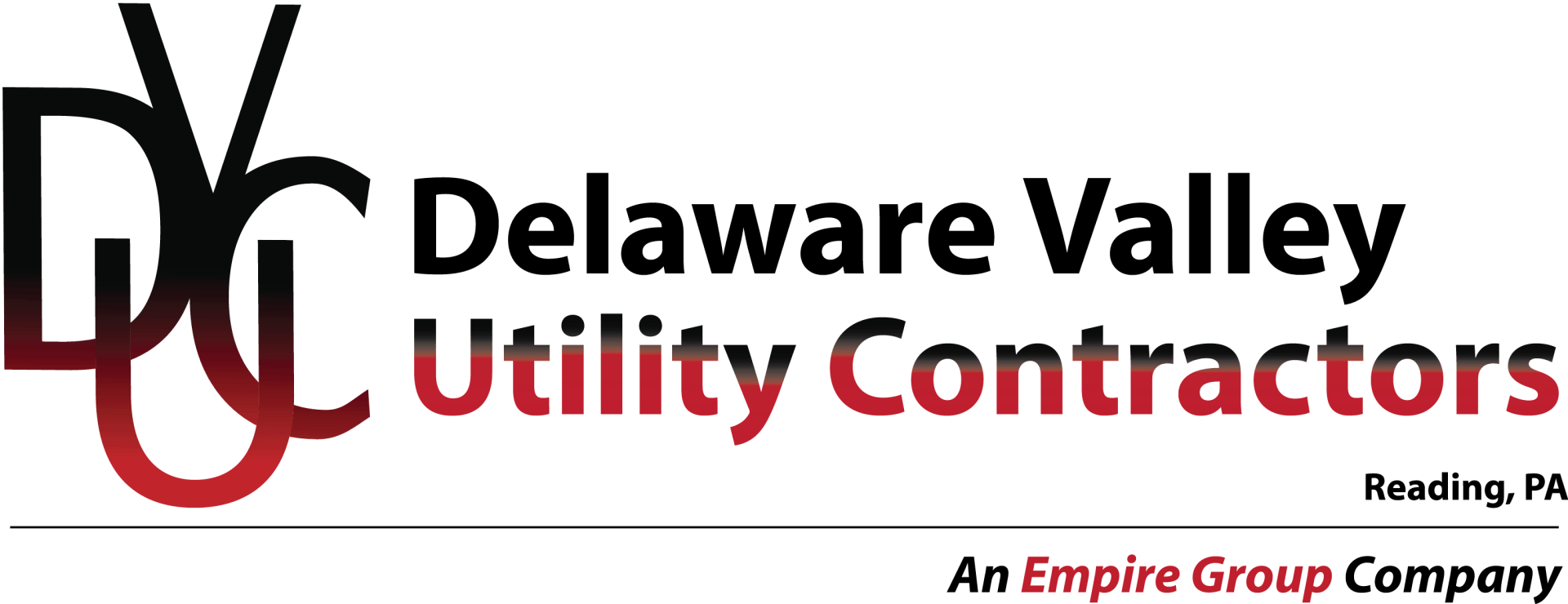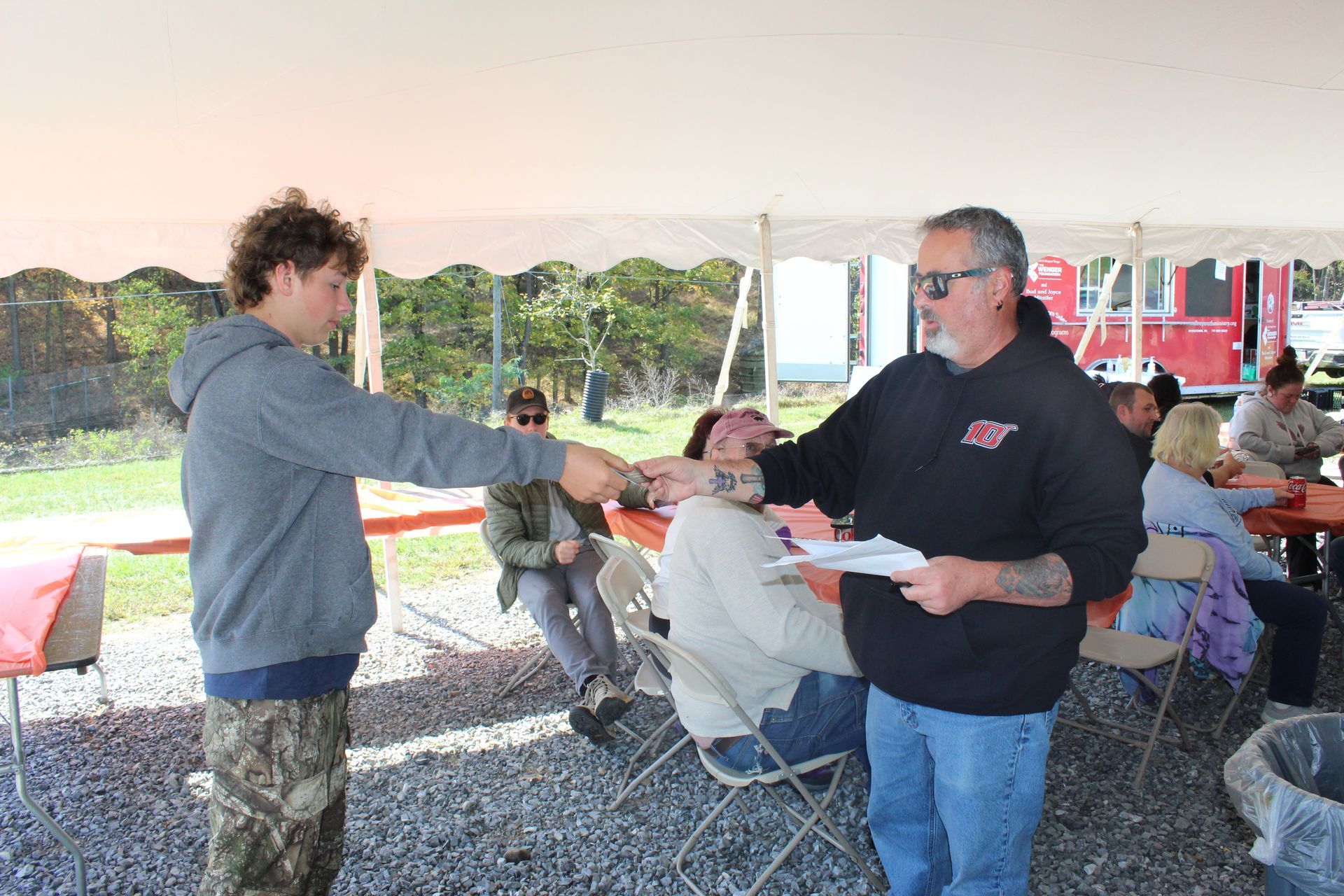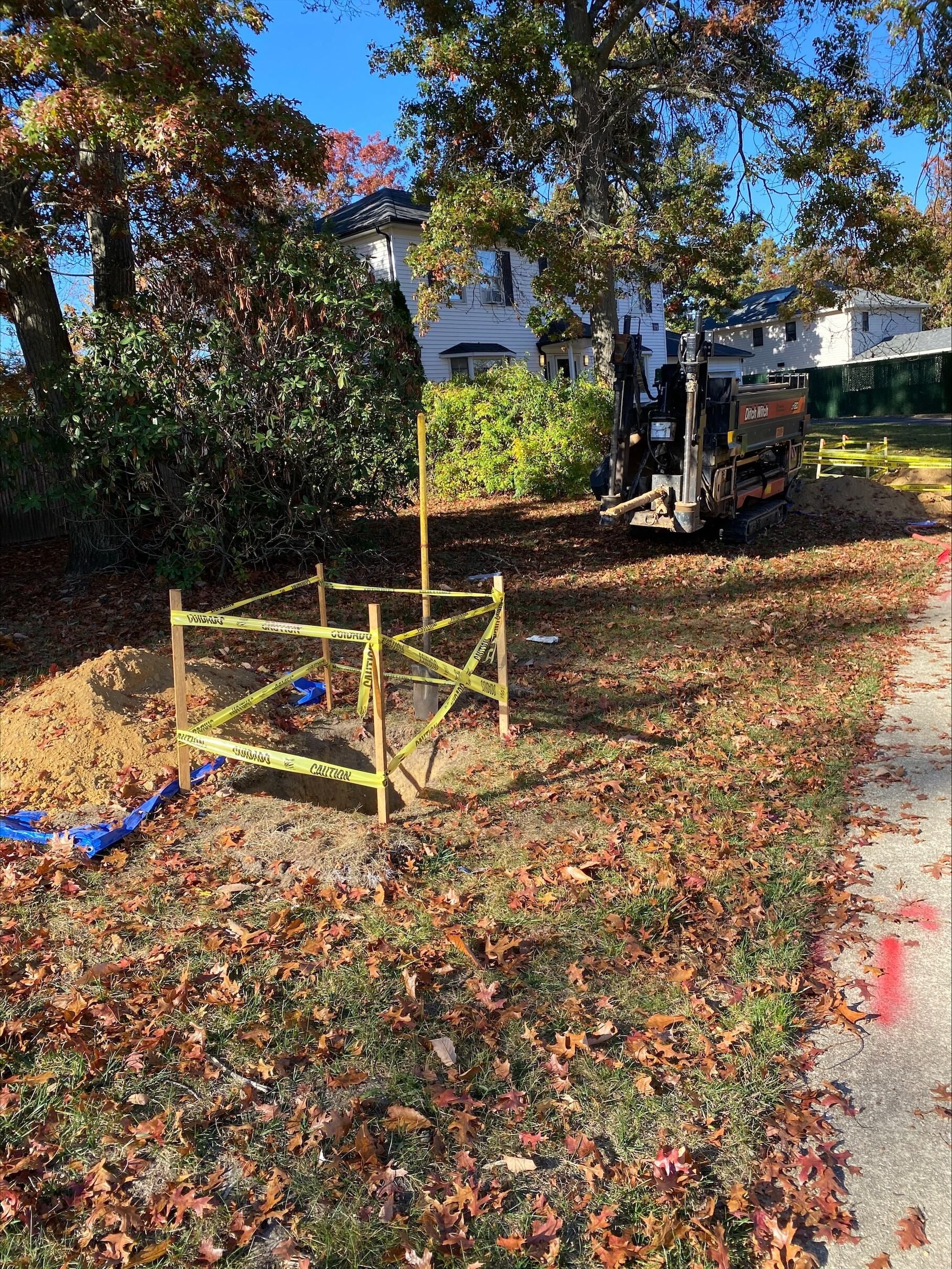The day kicked off with an assortment of drinks, coffee, and pastries to energize everyone. Fishing began at 9:00 AM and continued until 11:30 AM, providing plenty of time for both seasoned anglers and beginners to enjoy the rodeo. With three ponds of varying sizes on the property, participants had plenty of spots to cast their lines.
A Day of Fun, Fishing, and Family: Highlights from the Annual Fishing Rodeo
DVUC • October 15, 2024
As the leaves change and the air turns crisp, employees of Empire Group eagerly gear up for one of the highlights of the season: the Annual Fishing Rodeo and Picnic. This beloved tradition brings together staff and their families for a day filled with fun, laughter, and community spirit. This year’s event was held on Saturday, October 12th at the picturesque farm of Todd and Karen O’Neill, and truly captured the essence of camaraderie and enjoyment making it a memorable outing for all involved.
A Perfect Day for Fishing
Fun for the Whole Family
Delicious Food and Prizes
Building Community

Does Summer Heat Threaten Underground Pipes? When the temperature climbs past 90°F, most of us worry about sunburn, air conditioning bills, and keeping our lawns green. But there’s a hidden risk you might not be thinking about – your buried pipes . Just because they’re underground doesn’t mean they’re protected from extreme weather. In fact, prolonged summer heatwaves can put serious stress on your buried water and sewer lines , leading to leaks, cracks, or even full-blown pipe failures. How Does Extreme Summer Heat Affect Buried Pipes? 1. Soil Shifting and Ground Movement One of the biggest dangers to buried pipes during a heatwave is drying soil . As soil loses moisture, it contracts and shifts. This movement can: Put pressure on pipes, causing them to crack or dislodge Create gaps where pipes were once supported Damage pipe joints and seals This is especially problematic for homes with clay-heavy or expansive soil, which is prone to shrinking during hot, dry spells. 2. Increased Water Demand Hot weather often leads to more water use — from lawn irrigation systems to swimming pool refills. This puts added stress on underground water supply lines , increasing the risk of leaks or ruptures, especially in aging infrastructure. 3. Thermal Expansion Although buried pipes are generally more insulated from surface temperatures, extreme and prolonged heat can still cause thermal expansion , especially in shallow or poorly installed pipes . This stress can lead to buckling, joint failure, or pipe bursts. 4. Root Intrusion Accelerates Believe it or not, tree roots grow more aggressively in the heat as they search for moisture, making your sewer lines and buried pipes prime targets , especially if there are small cracks or leaks already present. Once roots infiltrate, they can cause major blockages or even pipe collapse. Warning Signs of Damaged Underground Pipes You won’t always see underground pipe issues right away — but there are key warning signs to watch for: Unusually soggy or sunken spots in your yard A sudden spike in your water bill Foul odors near your lawn or garden (a sign of sewer leaks) Drop in water pressure Gurgling drains or frequent backups If you spot any of these, don’t ignore them — what’s underground won’t stay hidden for long. Some Ways on How to Protect Buried Pipes in Hot Weather ✅ Hydrate the Soil Around Your Foundation Keeping the soil evenly moist (but not overwatered) helps prevent excessive shrinkage and ground shifting. A soaker hose around your foundation can help stabilize soil moisture levels. ✅ Maintain Your Irrigation System Check for leaks or overwatering. Leaking irrigation lines not only release water but can contribute to soil erosion and added stress on your underground plumbing system. ✅ Consider Trenchless Pipe Repair or Replacement If your underground pipes are already damaged, you should check out utility companies about trenchless repair options . These minimally invasive techniques avoid tearing up your yard and are ideal for dealing with heat-related damage. Don’t Let Heat Sneak Up on Your Pipes Extreme summer heat is tough on everything — including your buried plumbing system. While these issues often stay out of sight, they can quickly lead to costly damage if ignored. The good news? With the right maintenance, early detection, and smart prevention, your pipes can stay strong all season long. At DVUC, we have the experience and expertise to handle residential water line issues or pipe emergencies. Contact us today to learn more!
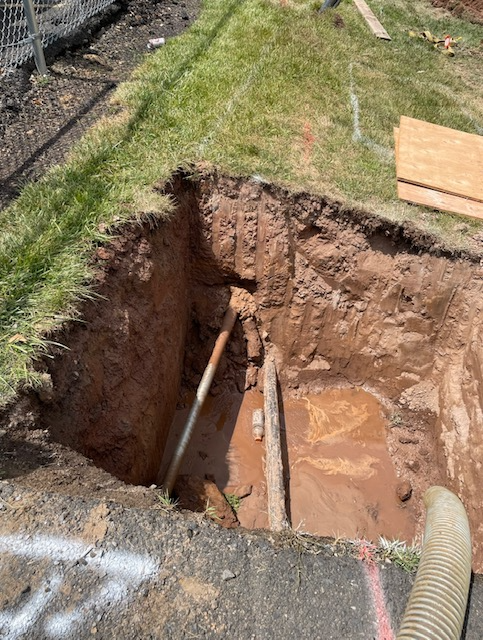
Delaware Valley Utility Contractors, also known as DVUC, has built a reputation for excellence through its dedicated service to the utility industry over the years. DVUC offers a wide range of services, including verifying utility lines, installing new gas lines, unclogging storm drains, and repairing water mains. Did you know water main breaks are quite common in the United States, with an estimated 240,000 happening every year? Water mains are large pipes buried under sidewalks and roads that distribute water throughout the community. The water mains are connected to homes, apartments, facilities, and businesses by smaller pipes called water service lines. The MDOT Construction Manual states that water mains are pipes that are run under pressure to provide a continuous supply of water when performing tasks (e.g., washing dishes). Water mains transport water to major water uses in a community, whereas water service lines transport water within the community (e.g., homes). What are Water Main Breaks? What can happen to the water mains is that they can rupture, which is known as a water main break. A water main break is a crack or rupture in the pipe that allows the water to escape. Having a water main break can cause property damage, road closures, and expensive repairs. SEH Inc. states that water main breaks can happen for several reasons, including: ● Excavation work ● Pipe age and material ● Pressure changes ● Ground settling ● Corrosive soils During excavation work, homeowners and utility workers can unintentionally strike the water pipes with their equipment, causing the water to spill out. Older pipes tend to be brittle and are more likely to break. As a result of temperature changes (e.g., cold weather) or firefighters opening and closing fire hydrants quickly, pressure changes cause pipes to rupture. As soil settles around the water main, the pipes can become stressed or warped, resulting in their failure. Some soil is corrosive (capable of destroying other substances by causing a chemical reaction) and can cause pipes to deteriorate over time, causing them to burst. What Is the Impact? The impact of water main breaks depends on the size of the pipes, where they are located, and how they are connected to the rest of the water system. According to BedfordMA.gov , some of the impacts that could happen are: ● Erode soil and roads ● Sinkholes ● Flooding ● Traffic Problems ● Damaged Properties On July 6th, 2025, Kutztown University’s South Dining Hall’s water main broke. This break caused the dining hall to flood. Although Delaware Valley University did not have a water main break in November 2022, the facility needed a water main system upgrade due to the addition of new bathrooms. Delaware Valley University had contacted DVUC to get the job done. DVUC is no stranger to upgrading water main systems at Universities. What can DVUC do for you? Here at DVUC, we specialize in a wide range of utility services, no matter the complexity or scope of your project. DVUC’s field crew has the training, equipment, and experience to handle water main and water service issues. We strive to exceed your expectations! Our team understands that every project is unique, and we take pride in delivering flexible solutions tailored to your specific requirements.
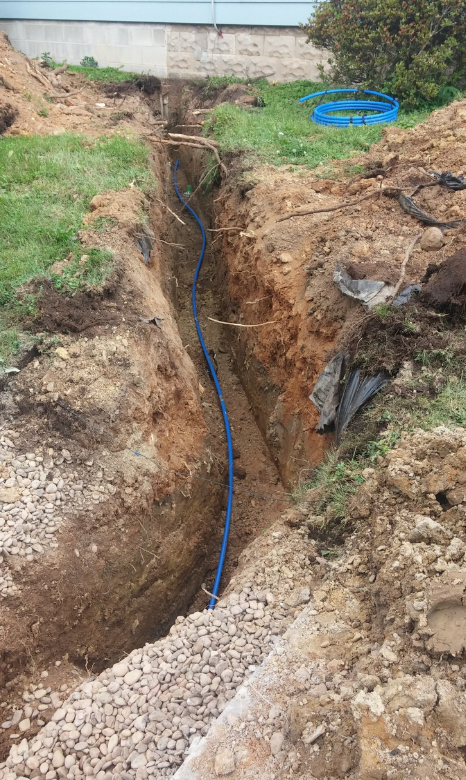
Every year, the month of June is recognized as Trench Safety Month. Founded by the National Utility Contractors Association (NUCA), this campaign aims to raise awareness about the dangers of trenching and excavation work. For industries involved in construction, utilities, and civil engineering, this month serves as a powerful reminder that safe trenches save lives. So why does a month need to be dedicated to it? Keeping Trenches Safe Trenching and excavation are among the most hazardous activities in the construction and utility industries. A trench collapse (or cave-in) can bury workers in mere seconds. One square yard of soil equals over 3,000 pounds, which can easily crush or suffocate a worker. Alarming Trench Safety Statistics: 1 in 5 worker fatalities in construction is related to excavation or trenching. 80% of trench deaths occur in trenches less than 10 feet deep. Lack of protective systems is the leading cause of fatal trench collapses. We can reduce these statistics by increasing training on trenching and excavation safety practices. To help prevent a collapse, the Occupational Health and Safety Administration (OSHA) states the focus should be on the three S’s for trenches five feet deep or deeper: Slope or bench walls, shore the walls with supports, or shield trench walls with trench boxes. For trenches four feet deep, employers must provide ladders, steps, ramps, or other means of leaving the trench. Thus, employers must ensure there is a clear trench entrance and exit. What Is Trench Safety Month All About? Nine years ago, NUCA launched Trench Safety Month promoting trench safety awareness by providing critical training and driving accountability. It’s supported by OSHA’s Trench Safety Stand Down, where employers and workers take a break to focus solely on trench safety education. The theme of this year’s Trench Safety Stand Down is “Get People Home.” The goal is getting people home at the end of the day through the key objectives of Trench Safety Month: Promote trenching and excavation safety standards. Educate crews on soil types, protective systems, and hazards. Encourage participation in the Trench Safety Stand Down and toolbox talks on the topic. Reduce trench-related fatalities and injuries through awareness and prevention. At DVUC, we believe safety is not optional—it’s essential. Trench Safety Month is an opportunity to pause, reflect, and recommit to doing things the right way. Protecting workers is the top priority, which ensures a job well done.

Summer is here and as the temperatures soar, so do the risks for utility workers who spend long hours under the blazing sun . Whether repairing underground lines or maintaining vital infrastructure, utility workers are on the front lines—often in full gear, with little relief from the elements. One of the most dangerous yet often underestimated risks? Heat stress. What Is Heat Stress? Heat stress occurs when the body cannot cool itself effectively, especially during prolonged exposure to high temperatures and humidity. It encompasses a range of conditions—from heat rash and heat cramps to the more severe heat exhaustion and heat stroke. In the utility industry, where physical labor, heavy PPE, and outdoor work are non-negotiable, the risks of heat stress are dramatically amplified. Why Utility Workers Are Especially Vulnerable 1. Prolonged Outdoor Exposure Utility crews often work 8 to 12-hour shifts outdoors. Unlike office jobs, there’s no air-conditioned break room a few steps away. 2. Physical Demands Climbing, digging, lifting, and troubleshooting electrical systems all increase internal body temperature—especially under a blazing sun. 3. Heavy PPE and Uniforms Essential for protection, personal protective equipment (PPE) often adds layers of insulation, making it harder for the body to dissipate heat. 4. Remote Work Locations Many job sites are isolated, meaning medical help may not be immediately available in case of a heat-related emergency. The Hidden Costs of Heat Stress Ignoring heat stress isn’t just a health hazard—it’s a business risk. Reduced productivity: Workers slow down or stop altogether to cope with rising temperatures. Increased errors: Fatigue and dehydration impair cognitive function, increasing the risk of accidents. Higher medical costs and liability: Heat stroke can be fatal and lead to costly compensation claims. Worker turnover: Unsafe working conditions can drive skilled workers away. Recognizing the Warning Signs Early symptoms of heat stress include: Excessive sweating Dizziness or confusion Muscle cramps Headache or nausea Rapid heartbeat If left untreated, these can progress to heat stroke, a life-threatening emergency that requires immediate medical attention. Tips for Protecting Yourself in Summer Heat Now that you understand the risks associated with heat stress, taking preventive measures becomes paramount: Stay Hydrated: Drink plenty of fluids like water and electrolyte-rich sports drinks. Avoid beverages with caffeine (e.g., soda), as they can contribute to dehydration. Use Sun Protection: Apply sunscreen with at least SPF 30 to exposed skin. Wearing hats and sunglasses provides additional protection where permissible. Take Regular Breaks: Despite deadlines, taking breaks helps prevent overheating and reduces the risk of heat-related illnesses. Don't Wait for a Heat Crisis As climate patterns shift, extreme heat events are becoming more frequent and intense. Protecting utility workers from heat stress isn’t just a seasonal concern—it’s a year-round responsibility. At DVUC, we prioritize safety above all else. We acknowledge the challenges of outdoor work in every season and provide comprehensive safety training to our team. Stay safe this summer!
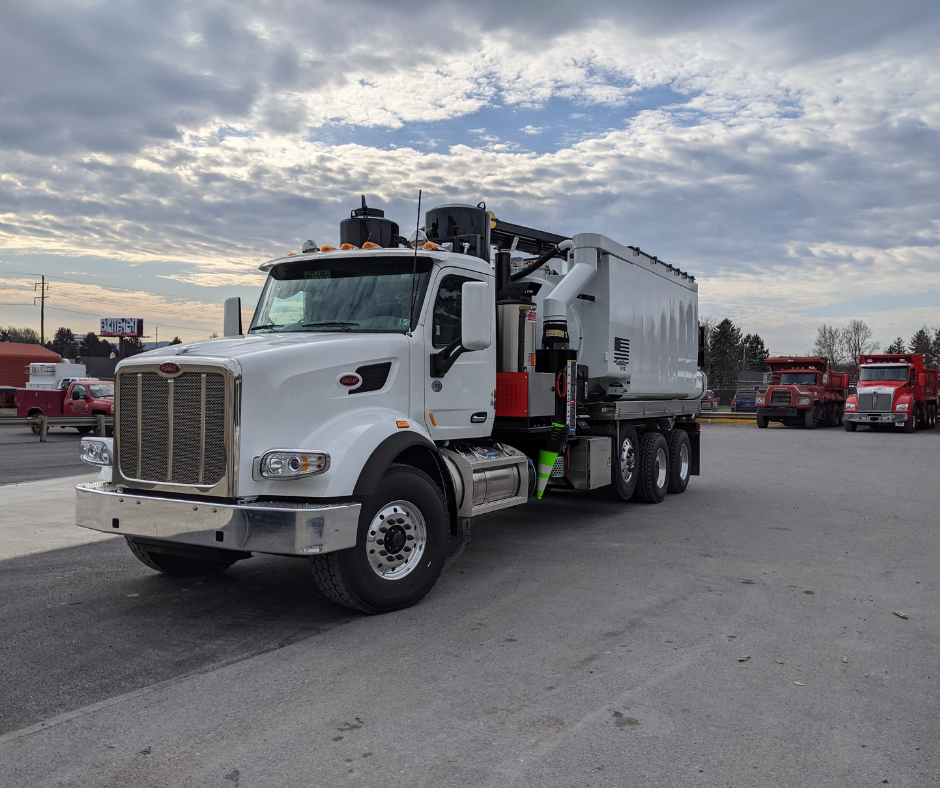
In the ever-evolving landscape of the utility industry, safety, precision, and environmental responsibility are more important than ever. One technology making a significant impact is vacuum excavation—a non-destructive digging method that's reshaping how utility companies approach excavation work. Whether you're a project manager, utility contractor, or municipal decision-maker, understanding vacuum excavation’s benefits can help you improve operational efficiency, reduce risk, and stay compliant with modern regulations. What Is Vacuum Excavation? Vacuum excavation, also known as soft digging or hydro excavation, is a trenching method that uses high-pressure air or water to loosen soil, which is then removed via a powerful vacuum system. This exposes underground utilities without causing damage to pipes, cables, or surrounding infrastructure. The process typically involves two main techniques: Hydro excavation : Uses pressurized water to break up soil. Air excavation : Uses compressed air, ideal for dry or sensitive environments. Why Vacuum Excavation Is Gaining Ground in the Utility Sector The utility industry is no stranger to underground risks. From gas lines to fiber optics, a single misstep can lead to costly damage, service outages, or even injury. Here's why vacuum excavation is becoming the go-to solution: 1. Enhanced Safety Traditional digging methods like backhoes and manual trenching increase the risk of damaging underground utilities. Vacuum excavation is minimally invasive, drastically reducing the chance of utility strikes. This translates to fewer accidents, lower liability, and improved public safety. 2. Regulatory Compliance With stricter regulations around safe digging and utility locating, vacuum excavation supports compliance with standards such as OSHA and 811 Call Before You Dig . Many municipalities now mandate soft digging near critical infrastructure. 3. Precision and Efficiency Vacuum excavation allows for surgical precision, making it ideal for tight urban environments or areas with congested underground networks. Crews can quickly expose only the necessary sections, speeding up the job without compromising accuracy. 4. Environmental Responsibility Because it disturbs less soil and reduces the need for large-scale site restoration, vacuum excavation is considered more environmentally friendly than traditional methods. It also reduces sediment runoff and minimizes landscape damage. 5. Cost Savings Over Time While the upfront cost of vacuum excavation equipment may seem high, the reduction in utility strikes, insurance claims, and project delays more than offsets the investment. In fact, studies show that non-destructive digging methods can reduce overall project costs by up to 30%. Applications Across the Utility Industry Vacuum excavation is versatile and widely used in sectors such as: Telecom : Safe exposure of fiber optic lines during installation or repairs. Gas and Energy : Non-invasive digging near volatile gas lines. Water and Sewer : Accessing buried pipelines without flooding or trench collapse. Municipal Projects : Potholing and daylighting in urban infrastructure upgrades. Smart Digging with Smart Data As utility networks become smarter and more complex, the need for digital mapping, subsurface utility engineering (SUE), and precision excavation continues to grow. Vacuum excavation plays a vital role in this trend, often working together with GIS data, ground-penetrating radar (GPR), and lidar technologies to support intelligent asset management. Vacuum excavation is more than just a safer alternative to traditional digging—it's a smarter, faster, and more sustainable way to support the utility industry's modern demands. At DVUC, our experienced team utilizes vacuum excavation to access hard-to-reach areas quickly and safely for a successful project. Contact us today to learn how your project will benefit from our vacuum excavation services.
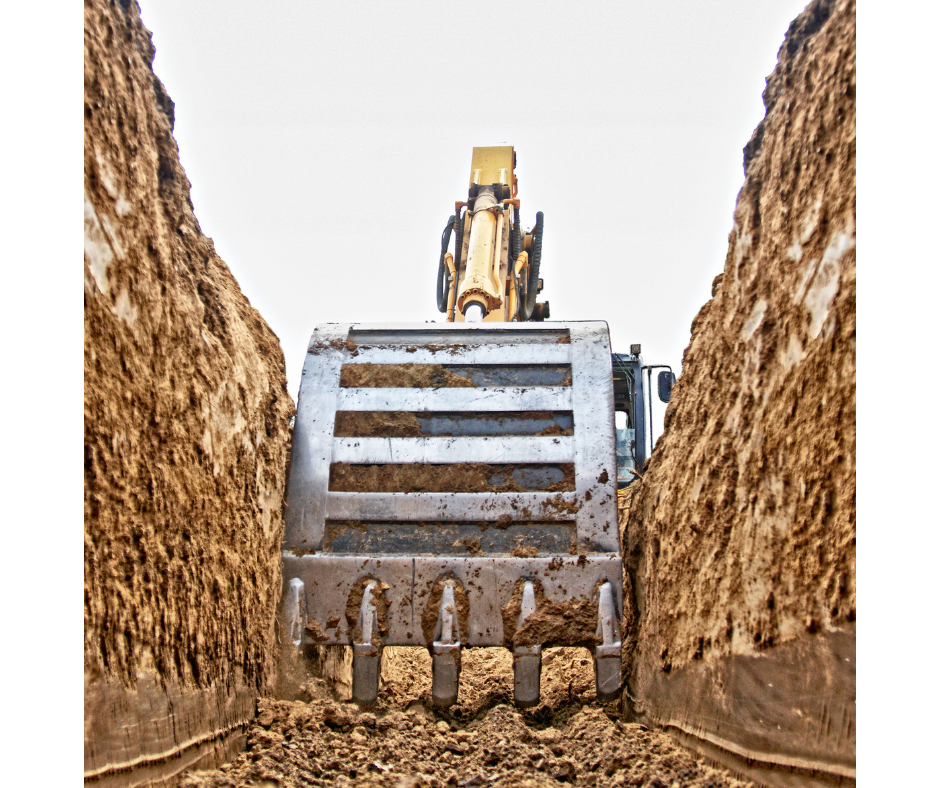
In the ever-evolving utility industry, choosing the right method for installing or repairing underground infrastructure is critical. Among the various techniques available, open cut trenching remains one of the most reliable and cost-effective solutions. Whether you're laying new pipelines, installing cables, or repairing existing utility lines, open cut trenching continues to offer unparalleled advantages. In this blog, we’ll explore the some of the key benefits of open cut trenching and why it remains a top choice for utility contractors and municipalities around the world.

April is National Safe Digging Month: Why You Should Care A s the days get longer and the temperature begins to rise, spring signals the start of the construction season. Whether you're planning a home renovation, landscaping project, or commercial construction, one thing remains constant: safety. And when it comes to digging, safety isn't just about following the right protocols above ground – it's about what lies beneath our feet. This April, National Safe Digging Month serves as a crucial reminder to dig with care and be mindful of the unseen dangers lurking below the surface. What is National Safe Digging Month? Established in 2007 by the Common Ground Alliance (CGA), National Safe Digging Month is an annual initiative aimed at raising awareness about the importance of underground safety. With millions of miles of utilities running beneath our feet, digging without knowledge can lead to accidents that disrupt not only your project but also the surrounding community. Why You Should Care: The Hidden Dangers Below D id you know that there are over 20 million miles of underground utilities across the United States? From power lines and pipelines to telecommunications cables and sewer systems, these critical networks keep our daily lives running smoothly. However, because they’re hidden below ground, they often go unnoticed until something goes wrong.
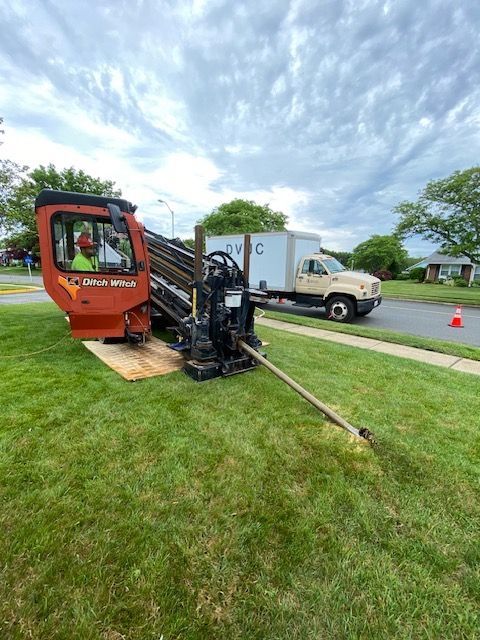
When it comes to installing underground utilities, there’s a more advanced and efficient method that has been gaining traction: boring. Also known as horizontal directional drilling (HDD) or directional boring, this technique is a more advanced method of installing underground utilities. It used for a number of applications, including installing drainage and sewer systems and drilling under sensitive ecosystems, It’s faster, less disruptive, and, in many cases, more cost-effective than traditional methods like trenching. But what exactly is boring, and why has become such a popular choice for utility contractors? What Is Boring? Boring is a specialized method used to install utilities beneath the earth’s surface. Instead of digging up large sections of ground or concrete, like traditional trenching methods, boring uses specialized drilling equipment to create underground pathways. The beauty of boring lies in its precision and efficiency. It’s particularly useful in areas where traditional trenching would be difficult or environmentally damaging. The contractor drills a series of boreholes along a planned route, allowing utility lines to be installed without the need for extensive excavation or surface disruption. However, the first step in the process is to locate existing utilities before the pilot hole is drilled. Next, the reamer is pulled through the hole to widen it out to the correct size. Once completed, the pipe (HDPE pipe) can be pulled through the hole to the end point. After the installation is done, site cleanup and restoration are performed. Advantages of Boring Boring offers distinct benefits that make it an ideal solution for specific projects. Here’s why more utility contractors are choosing boring over conventional methods: 1. Potential for Lower Costs One of the most significant advantages of boring is the potential for cost savings. Traditional trenching often requires demolition of existing structures, such as sidewalks, buildings, and roads. In contrast, boring requires minimal surface disruption, reducing the need for expensive restoration work. By avoiding the need to dig large trenches or destroy existing infrastructure, contractors can keep project costs down, making boring a more budget-friendly option in many cases. 2. Ideal for Complex Properties Properties with complex landscapes, such as steep hills, rocky terrain, or dense vegetation, are perfect candidates for boring. Trenching in these types of environments can be challenging, expensive, and time-consuming. With boring, contractors can drill through obstacles like boulders, hills, and difficult slopes without the need for extensive excavation or time-consuming trenching work. 3. Better for the Environment Another major advantage of boring is its minimal environmental impact. Unlike trenching, which can disturb large sections of land, boring enables utility installation beneath trees, streams, ponds, and wetlands without environmental damage. The technique can also avoid disruption to lawns and gardens, reducing the need for costly surface restoration after the project is completed. 4. Lower Risks Safety is always a top priority in construction, and boring has several inherent safety advantages over traditional trenching. Trenching can pose significant risks, such as cave-ins, flooding, and groundwater contamination. These risks are drastically reduced with boring, which is a safer and more reliable method, especially in specific circumstances. Boring or Horizontal directional drilling is transforming how utilities are installed. With its ability to reduce costs, minimize environmental impact, and offer safer and more efficient solutions in complex environments, it’s no wonder that this method is becoming more popular among utility contractors. So, if you’re planning a utility installation project and need a solution that’s cost-effective, environmentally friendly, and reliable, boring is the perfect choice. At DVUC, we have the experience and equipment to provide quick and efficient boring for a variety of projects. Contact us today learn how we can help make your project run smoothly!
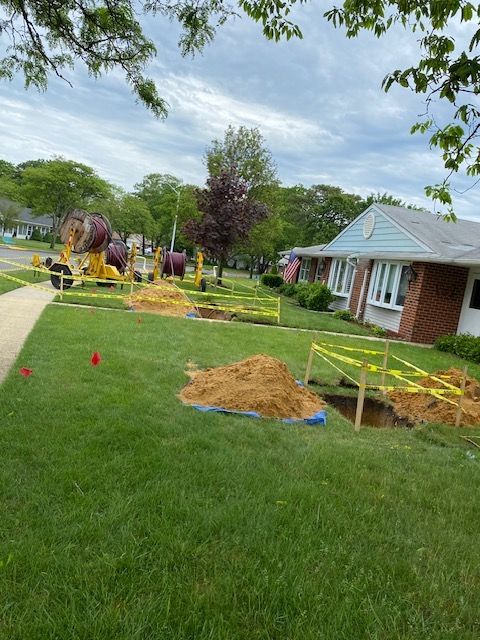
When we think of utility repair, we think of a bursting water main at a busy intersection. While utility companies do repair them, they also do a lot more. You can find a utility crew installing an electric service, repairing a gas line, fusing a pipe or replacing a sewer pipe. DVUC tackles these jobs at a variety of job sites, especially residential developments. At these job sites, minimal disruption to properties and traffic flow is crucial to a successful project. Let's take a look at few of them. Giving a Boost to a Senior Residential Development Discover how DVUC transforms utility installation for developments! Recently, our skilled New Jersey crew installed 343 feet of 35kv 1/0 primary wire in a senior residential development in Manchester, New Jersey. Check out the photos below showcasing our team in action. At left, a team member uses a locator to ensure the drill underground is at the correct depth avoiding any underground utilities. At right, a team member watches the rod go through the catch hole as it drills through the ground towards the final destination.
